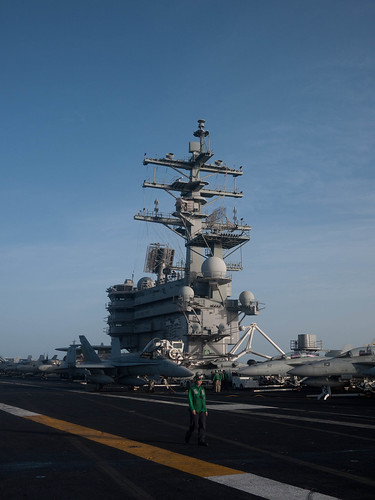Iran Nuclear Crisis: The Case For Patience
As tensions increase between the United States and Iran there is another round in the ongoing debate of what the US should do about the Iranian nuclear program. This debate has been playing out on the Foreign Affairs website, former Bush DOD official Matthew Kroenig makes the case for attack and Collin H. Kahl, who worked for Obama, arguing against an attack.
The argument for patience, that is containment and engagement, is much stronger. At this moment Iran does not have a nuclear weapons and it is not clear if they even want them. On a visit to Israel Chairman of the Joint Chiefs, Gen. Martin Dempsey, was told by top Israeli intelligence officials that Iran has not yet decided whether or not to produce a nuclear weapon.
Kahl notes that even if Iran is seeking nukes and has started the long process of building them, they are still years away from success. A test device alone would take a year under the worst-case scenario. The constant talk of Iran being ‘months away from the bomb’ have been going on for years now. This 1995 New York Times piece is just one example in a long trend.
If a decision were made to destroy the existing Iranian nuclear facilities it would require a full strike against facilities, meaning weeks of risky sorties. An attack on Iran would not be a repeat of the relatively easy strikes against Syria in 2007 and Iraq in 1981. Iran has learned from those examples and an attack against Iran would be far more difficult.
The consequences of a strike against Iran would be catastrophic to American interests. It would undermine America’s standing in the region; putting allies and US forces in the Gulf at risk. An attack would create a “rally ‘round the flag” effect in Iran that would strengthen the tottering regime. After the Green Movement in 2009 and the spread of people’s movements across the region, Khamenei and Ahmadinejad have been in a precarious position. An Israeli or American strike would increase their popularity more than anything the regime could do. A strike would also impact the ongoing Arab Spring and probably make it more anti-American . As Kahl points out, anti-Americanism has been largely absent from the various movements in the region during the Arab spring. An attack on Iran would bring further chaos to the region and Iran could unleash reprisal attacks against Israel and American bases in the region.
Some argue that regime change is necessary to prevent Iran from developing nuclear weapons; these commentators have apparently forgotten about Iraq. The American military still hasn’t recovered from years of deployment in Iraq and Afghanistan and indeed will still be in the latter for the foreseeable future. An invasion of Iran would be a bigger endeavor than Iraq was, one that the US military is in no shape to execute after the last decade (see page 95 of this PDF report from the Bipartisan Policy Center). Would there be another massive counterinsurgency campaign while a new pro-American regime is installed? That didn’t work in Iraq in 2003. Nor can America afford another Middle East adventure; it would cost billions and worsen the deficit.
The best options are to continue the policies of containment and engagement. The most recent round of sanctions are the most stringent so far. The fact that after they were announced, Ahmadinejad threatened the U.S. and her allies shows that the regime is fearful of these latest sanctions. Hopefully continuing to escalate international pressure on the regime is the best way to bring Iran to the table. It is certainly better for the U.S. than starting another war in the region.
[Photo courtesy of Jeremy R. Young]

